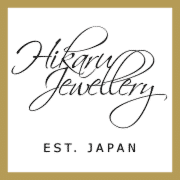Obviously, all gold is not created equal. Many people select their gold jewellery by price, thinking the more expensive it is, the higher the quality. Others shop for “discount” gold, believing that they can get purity for a cheaper price. But do you know what the professionals know about what the differences are between 18 karat and 24 karat gold?
First, we will start with the difference between a “karat” and a “carat” thought they are pronounced the same. But they have two different meanings. A karat is used for gold measurement while a carat is used for gemstones, such as a diamond. Karat represents the purity of the metal; carat represents the weight of the stone. So you can have both types in the same ring or necklace.
It is interesting that wedding rings have this combination of one of the softest metals and the hardest gemstone set together.
However, if you are in a country other than the United States, the spelling is the same for both gold and gemstones. This explains how 24 karat gold is pure gold instead of, say, 100 karat purity. The original measurement of gold in medieval times was 24 ounces in weight, and had been with the world for at least 500 years.
Now that you know the basics of 24 karat gold, we can talk a bit about some of its specific qualities.
Pure gold as it comes out of the ground is very soft, for the purposes of jewellery, a small amount of another metal must be mixed in to make it wearable. Two of the most common metals added are silver and copper.
“No gold is 100% pure, unlike the floor of the New Jerusalem. All gold contains other metals, such as copper and silver, as impurities. Gold is determined as ‘pure’ when it is pure enough to used for manufacturing new products, such as jewelry or electronics. Today, ‘pure gold’ must be from 99.95% (three nines five) to 99.99% (four nines) pure. Gold must be ‘pure’ in order to be sold at near market price. In rare cases, 99.999% (five nines) or 99.9999% (six nines) gold is needed and this is sold at a premium.” – Lee Gearhart
This information applies to jewellery that is known as yellow gold. There are jewelers who advertise 24 karat white gold jewellery. In order to change the color, a combination of certain metals such as nickel, manganese or palladium is mixed in with the pure yellow gold to “bleach” out the yellow color. Because gold sold as 24 karat is technically not 100 percent gold, buyers should not quibble about the “100 percent purity” issue but instead be informed.
The 18 karat or 750 gold, is different from the 24 karat gold in terms of purity but the differences are actually beneficial to the jewellery aficionado. Though the yellow gold purity of 18 karat gold is 75 percent (the reason it is also called “750 gold”) it gives the buyer many more choices in color and design. White gold is often 18 karat purity because it contains a combination of other metals. Since 18 karat gold is significantly harder than 24 karat gold, gemstones that are set into rings and other pieces of jewellery are much less likely to fall out. The color of 18 karat gold is less yellowish than 24 karat gold, which is one way to tell the difference between the two simply by appearance.
It was mentioned earlier that white gold differs from yellow gold in purity. Rose gold is more common today than it was in the past, and is a combination of yellow gold and copper. The mix is often found in antique jewellery, as the modern technologies available today were not present back then. The majority of rose gold is a 75-25 mixture of gold to copper and silver, making it 18 karat quality.
Now how about the location of the gold? We have heard about Japan Gold, Saudi Gold, Italian Gold and Chinese Gold, which one is better? As we have shared with you above, it doesn’t matter where the location of the gold is but the purity. 18 karat gold is the same everywhere as long as they follow the industry standard of 75% and 25% other alloys. Why is it that Saudi Gold is usually darker? People there prefer buying 22 karat gold which results into a more darker color and softer gold than those less in purity but the ideal would be 18 karat gold especially if you have precious stones attached to it.
Each type of gold has it benefits, and knowing the advantages of each will help you make the best decision about what type of gold to choose. Use the information here to be an informed consumer and will be confident about the price you pay for each piece of jewellery.
